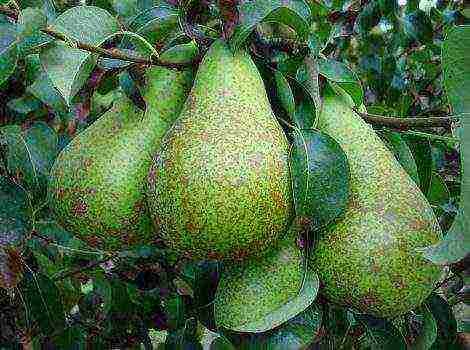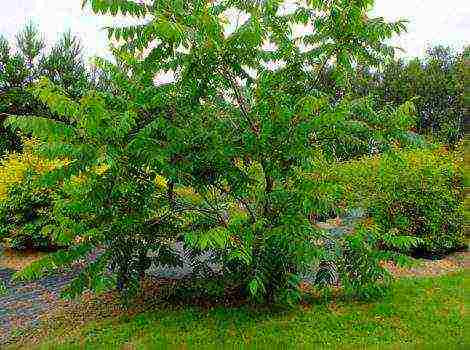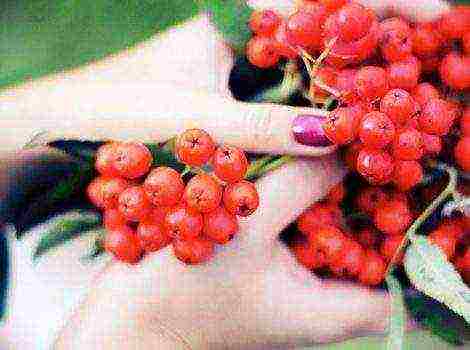How to plant a pear correctly in spring, summer and autumn
A pear is a very tasty and healthy fruit that every gardener strives to grow in his personal plot. There are a huge number of different varieties, and it can be difficult to identify the variety of this fruit in the early stages of a tree's development.
When the tree begins to bear fruit, sometimes instead of a large-fruited variety with excellent taste, the presence of wild pears or another less attractive variety than originally expected on the site is revealed. But the way out of this situation is very simple - it is enough to graft the tree with a better quality shoot.
In this article, we will talk exactly about how to graft a pear, how to do it correctly and whether it is possible to graft on various trees.
Why plant a pear?
The tree is grafted in order to give it the characteristics and qualities of a different variety. Often the gardener, for one reason or another, is not satisfied with the tree growing on the site.
This tree either bears very small fruits, or the taste of these fruits leaves much to be desired. Sometimes a tree is grafted to prolong its "youth". A fresh, young shoot, which will be transplanted to an old tree, after a while, will significantly rejuvenate it and will give a large and stable harvest.
Often, the result of this combination of different varieties, the seedling inherits the best qualities of both trees.
Vaccination may be needed when there is no desire at all to wait many years before harvesting the first harvest, planting pear seedlings in the ground. It is possible to significantly accelerate the appearance of fruits with the help of a simple and time-consuming operation.
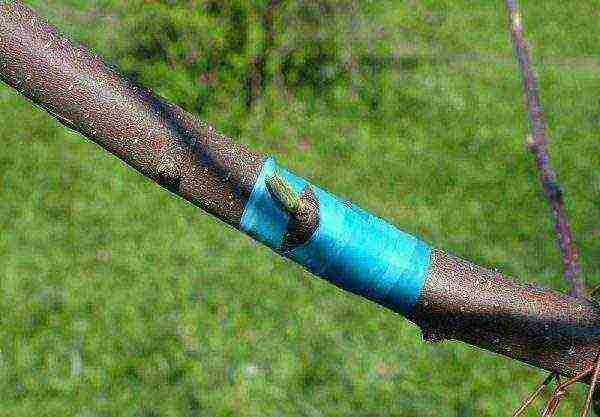
What you can graft a pear on: apple and mountain ash
A pear can be grafted onto the same tree. If a wild tree grows on the site, then grafting will allow you to get a full-fledged tree with excellent characteristics in a short time. It is not recommended to plant a pear on a pear with different ripening dates... In this case, the life cycle of the tree is significantly reduced.
If the site is swampy or the groundwater level is too high, then the pear will not grow in such conditions. Grafting on another tree is the only possible means of obtaining a crop on your own plot.
Grafting on mountain ash will allow you to grow this fruit on such a site, and given the high frost resistance of mountain ash, you can safely graft the most late-ripening varieties of pears. A grafted pear on a mountain ash will have a very compact appearance, which will make it easy to harvest future crops. When such vaccination is carried out, at least one fourth of rowan shoots should be left on the tree, otherwise the tree will not receive the required amount of substances for fruiting.
You can try to vaccinate on an apple tree. A good result can be obtained if you use quince, irgi or chokeberry as a base for the scion of this fruit.
The varieties are ideal for this purpose: Tonkovotka, Severyanka or Svetlyanka.These trees are unpretentious to growing conditions and with the correct operation of grafting a shoot of a more promising variety, you can get a significant fruit harvest in 2 years.
A pear twig on a hawthorn bush takes root well, but such a tree will be too much covered with thorns, which will greatly complicate the harvest of the future harvest.
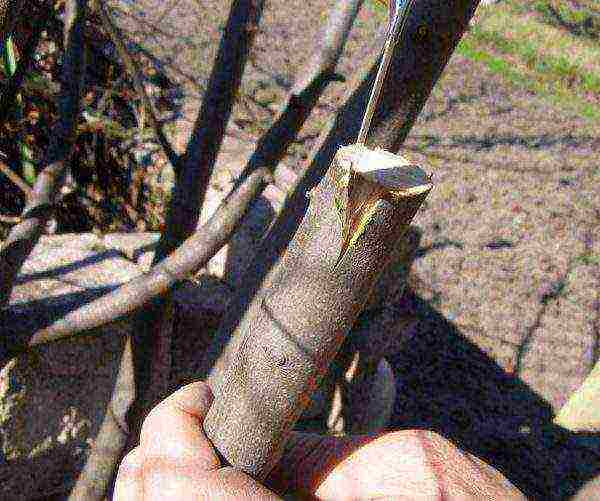
When can a pear be grafted?
The tree is grafted in early spring, when the buds on the trees have not yet blossomed. When carrying out the procedure before the start of active self-movement, one can hope for 100% effectiveness of such a scion. If for one reason or another it was not possible to vaccinate on time, then you can not wait for next spring, but carry out this procedure in the second half of the summer.
The optimal time in the southern regions for this work will be the beginning of spring. In the northern regions, a similar procedure should be performed no earlier than the second half of April. To determine the optimal time for grafting a pear, it is necessary to monitor the air temperature. When the nighttime temperature deviations are insignificant, you can safely proceed with this operation. Otherwise, the grafted shoots will freeze at night and die.
In summer, early July will be the most favorable for vaccination. It is imperative to complete such work before August. This month, significant temperature fluctuations are possible during the day, which can negatively affect the grafted plants.
You may also be interested in the following pear-related articles:
- How to properly prune a pear in the fall?
- How and when to remove pears from the tree?
- Useful properties of earthen pear.
How to choose the right scion?
First of all, you need to decide on the type of tree that will become a "donor" for transplanting a branch onto a new base.
If you want to get a hybrid large-fruited plant, then pear varieties are suitable for this purpose: Bere-Gardi; Bere Clergeau; Large-fruited Susova; Favorite of Yakovlev. To carry out the correct grafting of these pear varieties, it is necessary to separate a small branch with several buds.
If a scion of branches of equal diameter is carried out, then a branch equal in thickness to the scion should be selected as a scion. When grafting is carried out "in a split", then you can use as a scion 2 branches of a much smaller diameter than the trunk of the tree where it is planned to transplant the pear.
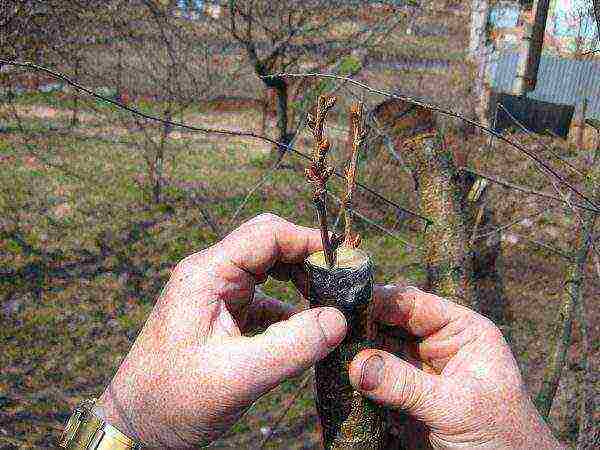
Pear grafting methods in spring, summer and autumn
There are several ways to plant a pear:
- Into the cleft.
- For the bark.
- Budding.
To complete the work, you will need the following tools and materials:
- Garden knife.
- Hacksaw.
- Garden var.
- Plastic bags.
- Strapping tape.
To carry out this operation, a branch is separated in the stock, and a split is made at the cut site using a knife or hatchet. The depth of the split should be at least 5 cm. Then a scion is placed in the split, coated with garden varnish and the tree trunk at the split is pulled together with a special tape.
Under the bark, grafting is carried out when the diameter of the scion is significantly less than the diameter of the rootstock. To carry out this procedure, it is necessary to cut the bark of the tree in a T-shape and insert the cutting into the gap formed. After that, you should carefully pull off the trunk with some kind of cloth or rope. It is advisable to coat the junction of the two branches
garden pitch to eliminate the likelihood of infection.
To perform budding, it is enough to make a small incision on the stem of the stock, attach a scion to it and wind two branches well with a special tape for winding.
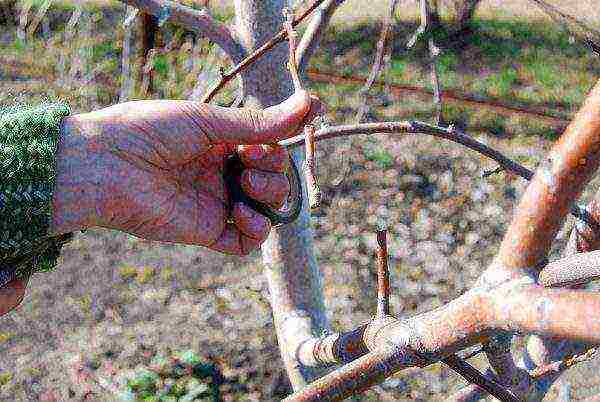
How to plant a pear step by step
If the tree is grafted incorrectly, then time will be wasted, the branch will not be accepted and it will be necessary to wait for the next favorable period to carry out this operation on the grafted tree.
The correct grafting on a small pear seedling is carried out in the following sequence:
- Shake off the ground at the base of the seedling trunk.
- A T-shaped incision is made at the root collar.
- A "flap" with a kidney is cut from the handle. The cut should be equal to the size of the T-notch.
- With a knife, the place of the cut on the stock is pushed apart, and a shield with a kidney is installed in the resulting gap.
- With a plastic wrap, the shield is tightly attached to the trunk of the seedling so that the bud remains outside.
3 weeks after the pear inoculation, it is necessary to inspect the junction of the shield with the main trunk. If the kidney is green, the operation can be considered successful. It is better to graft 2 new branches into the split, thus minimizing the likelihood of the scion dying.
Splitting can be done on any branch of the main tree, but it is considered most effective to carry out such an operation from the north side. In this case, the survival rate of the scion increases significantly. To increase the survival rate of a new branch, it is advisable to use a garden varnish, which will protect the vaccination site from damage by insects and microorganisms.
Conclusion
You can update the trees in the garden with the help of grafting. This operation does not require the purchase of expensive equipment or the use of special knowledge. It is enough to purchase a scion of a new variety and turn an apple, quince or mountain ash orchard into a pear grove.
And finally, a short video in which you will learn what to do and how to plant a pear step by step in the Moscow region:
